Mud kitchen ideas: 20 fun and creative ways to keep little ones busy outside
Get your kids outdoors with these mud kitchen ideas for back-to-basic crafts and tons of messy fun

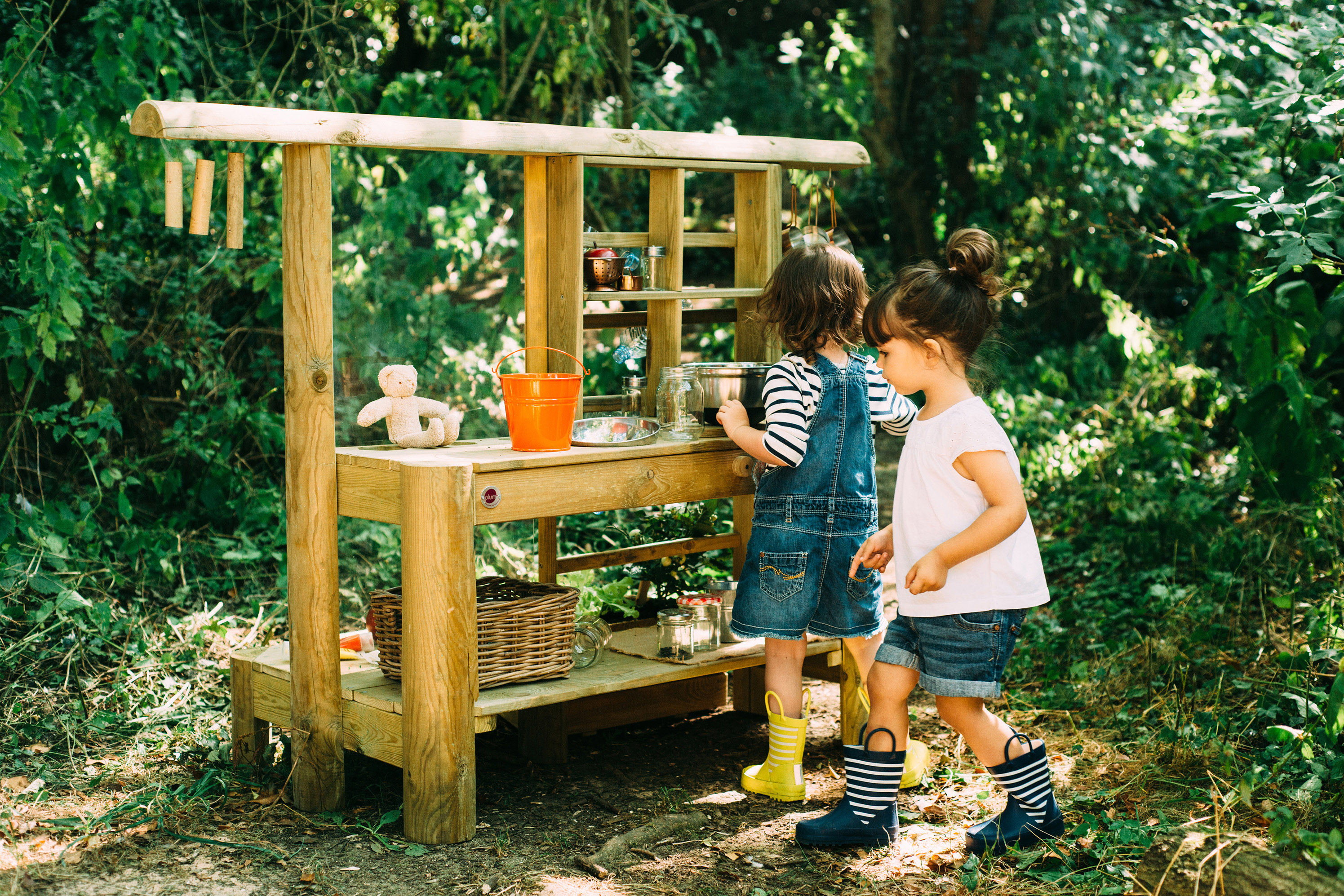
These mud kitchen ideas are guaranteed to give your kids hours of outdoor fun. And, getting stuck in with hands-on activities alongside a big dose of fresh air will be a welcome break from screens.
Whether your garden is big or small, rural or urban, it can become a treasure trove of finds. What's more, mud kitchen ideas help children to connect with nature and learn life-long skills.
They don't require tons of expensive equipment or unsightly toys either. In fact, the simpler the offering, the more imaginative the play becomes. A few basic containers for mixing, a hidden pathway through bushes, and some mud, leaves and soil can be all you need to keep little ones occupied, and they'll provide some great memory-making moments as well.
Discover our favourite ideas below, then head over to our garden activities for kids for more ways to keep them entertained outdoors.
1. Add a working tap to your mud kitchen

An outdoor kitchen with hob, shelving, and cupboard space offers no end of play possibilities. But add in some water and it all comes alive.
Many outdoor kids' kitchens come with a water reservoir and tap – but you can incorporate your own too. Go for a simple hand operated lever pump or try a double push action caravan sink hand pump and tap from Amazon.
Set it up to suck up water from a barrel or large plastic water canister and pump into a washing up bowl or metal bucket. It's great fun and ideal for developing reasoning and team working skills too.
2. Decorate your mud kitchen with complementary details

If you're worried that a mud kitchen will be an eyesore (especially if your plot is on the smaller side), then fear not. As @jemmiju perfectly demonstrates in the image above, a mud kitchen can be a stylish feature to your garden, as well as tons of fun.
Painted in a gorgeous blue-grey hue, it complements the galvanised plant pots and stone wall behind beautifully. And we adore the bunting, which adds a lovely finishing touch.
Love the modern look as much as we do? Head over to our modern garden ideas for more inspiration.
3. Take your mud kitchen up a notch with stepping stones
A post shared by J E N N A + G R A N T (@thisoldbrickhouse)
A photo posted by on
To make everything easier to access for little ones, why not add some log stepping stones? Jenna and Grant from @thisoldbrickhouse have done just that, and the effect is super cute.
Clambering up and down will add an extra element of fun for kids too – so much so that even cold weather won't stop them from playing! You can read more about this gorgeous DIY mud kitchen on the This Old Brick House blog. And check out our tree stump ideas for more inspiration on how to put them to good use.
4. Get creative with dry materials
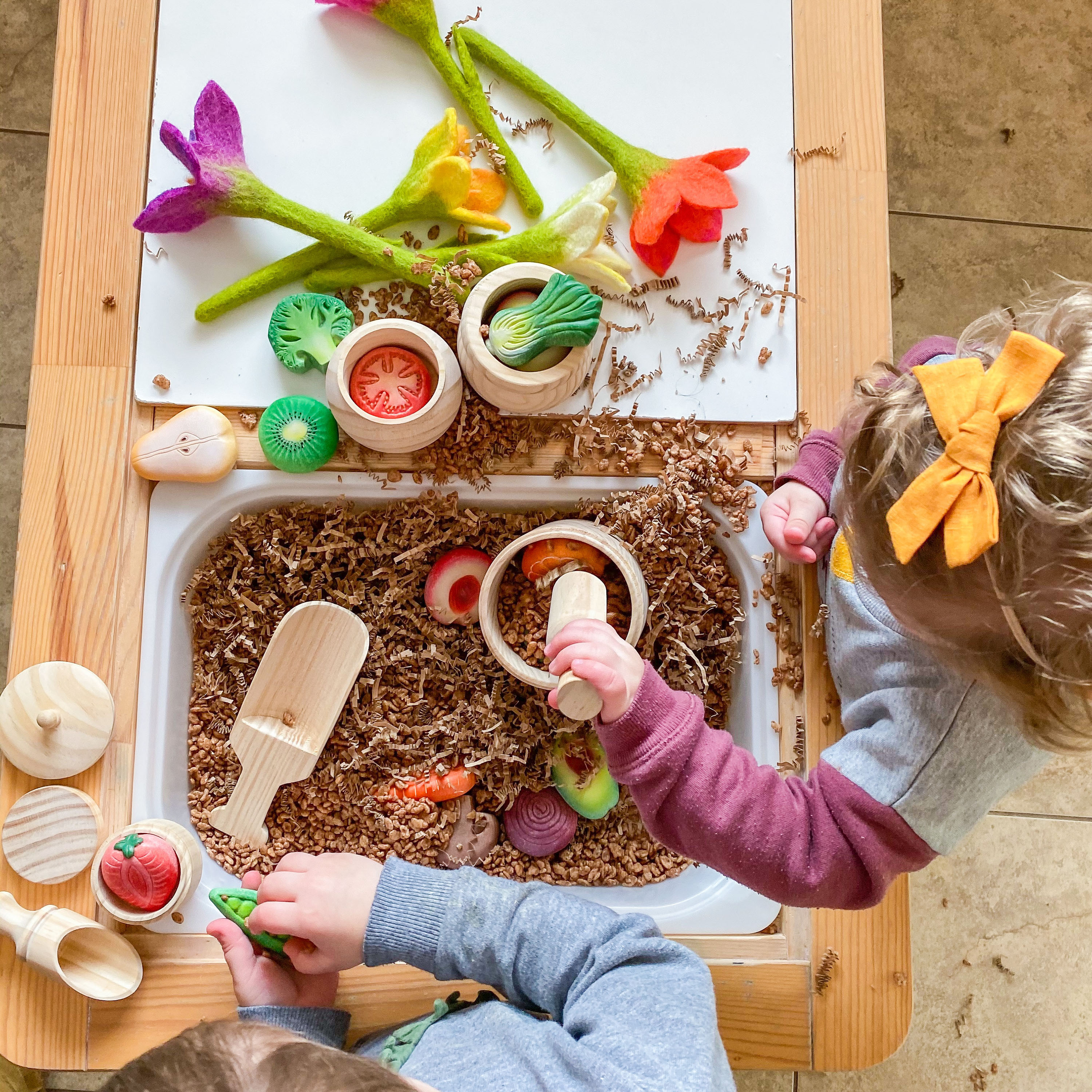
Sure, a bit of mud can be fun and all. But sometimes, it's nice to avoid it – especially when there's quite enough laundry to do already. But lack of mud definitely doesn't equal lack of fun.
This idea from Shawna at @bubblesandbellylaughs combines colourful toy fruit and veggies, felt flowers, brown crinkled paper, and chocolate-flavoured cereal, to make a gorgeous garden set-up. Kids will love digging, harvesting, and then replanting their goodies.
It's a lovely idea for smaller plots, such as balconies or courtyards. And if it's raining, you can bring the set-up indoors.
5. Grab the paints and decorate stones
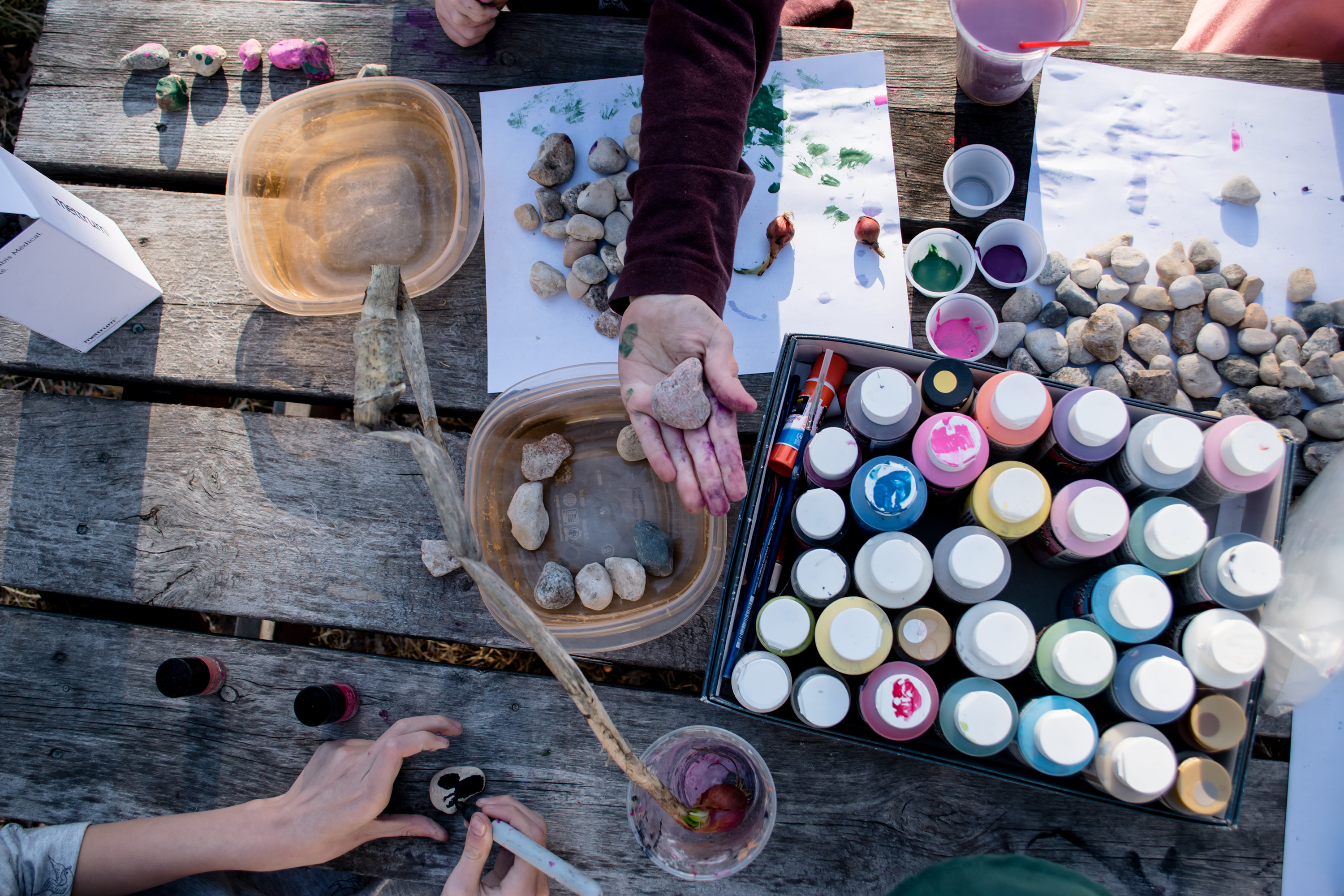
Bring a splash of colour into mud kitchen play. All you need is some pots of poster paint and a handful of stones (or encourage kids to find their own from around your garden).
Kids can decorate their pebbles to turn them into pretend insects, or even food, and then use them in their mud kitchen creations. It'll add an extra level of creativity to their playtime (and extra hours spent occupied).
Do be careful with smaller children though, you don't want any stones to end up in your little ones' mouths.
6. Grow sensory herbs for texture and fragrance
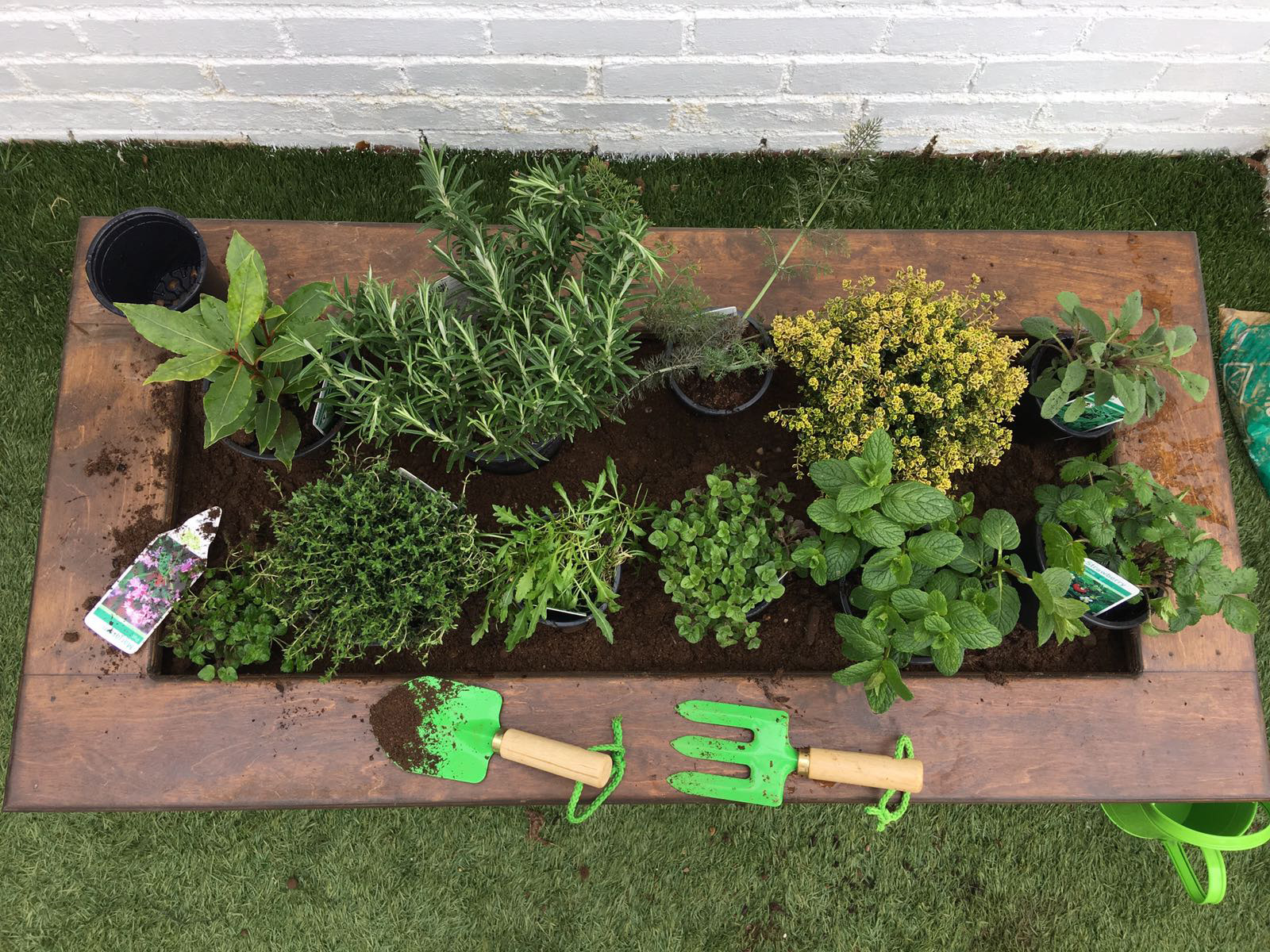
Appeal to your child's senses by learning how to create a herb garden together. Varieties such as rosemary, chives, parsley, sage and mint are all pretty robust plants and are great for enticing children to get hands on.
Tactile to touch and with varying leaf colours and shapes, they also release a range of contrasting scents when pinched or cut, stimulating a sense of smell and helping to develop fine motor skills.
7. Upcycle tins to make cute containers

Make the most of being outside, don the overalls and get the paintbrushes out – it's the perfect chance to let little ones get creative with colour.
Look for items that they can upcycle and make their own. Surplus or reclaimed furniture, wooden fruit crates or tin cans can all be smartened up with a splodge or two of paint, plus they can be useful after for storage, collecting or planting.
Go for water-based paints – so much easier to clean up – you can always protect masterpieces with clear waterproof varnish afterwards.
Why not join in and not get a little creative yourself? Our guide on how to create your own colourful terrazzo pots is a great place to start.
8. Make a water wall
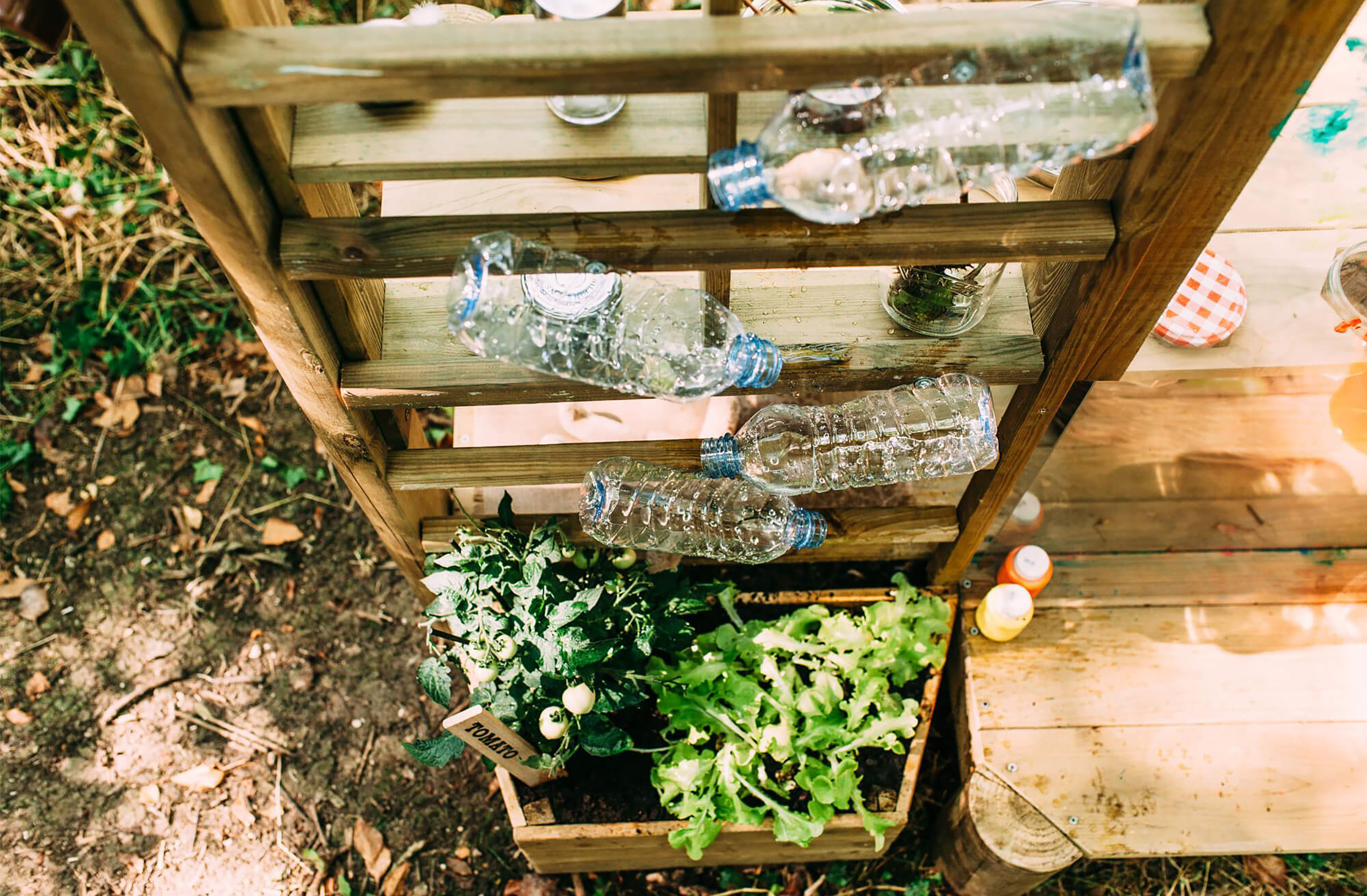
Water play is great for learning and generally making a mess. If you don't want to invest in one of our best water tables, a simple water wall can keep little ones occupied for hours.
Have fun constructing one from a small fence panel, shelving unit, trellis or picket fence – just make sure it stands up securely. Cut out the sides of several plastic bottles, remove the lids and attach to the support using a nail. Position so each bottle can pivot and the water flows down into the one below. Just be sure to collect the water in a bowl or bucket at the bottom so it can be reused, or use it to water some plants.
Plastic funnels, toy water wheels, and lengths of guttering also create fun effects and cost very little too.
9. Make mud muffins
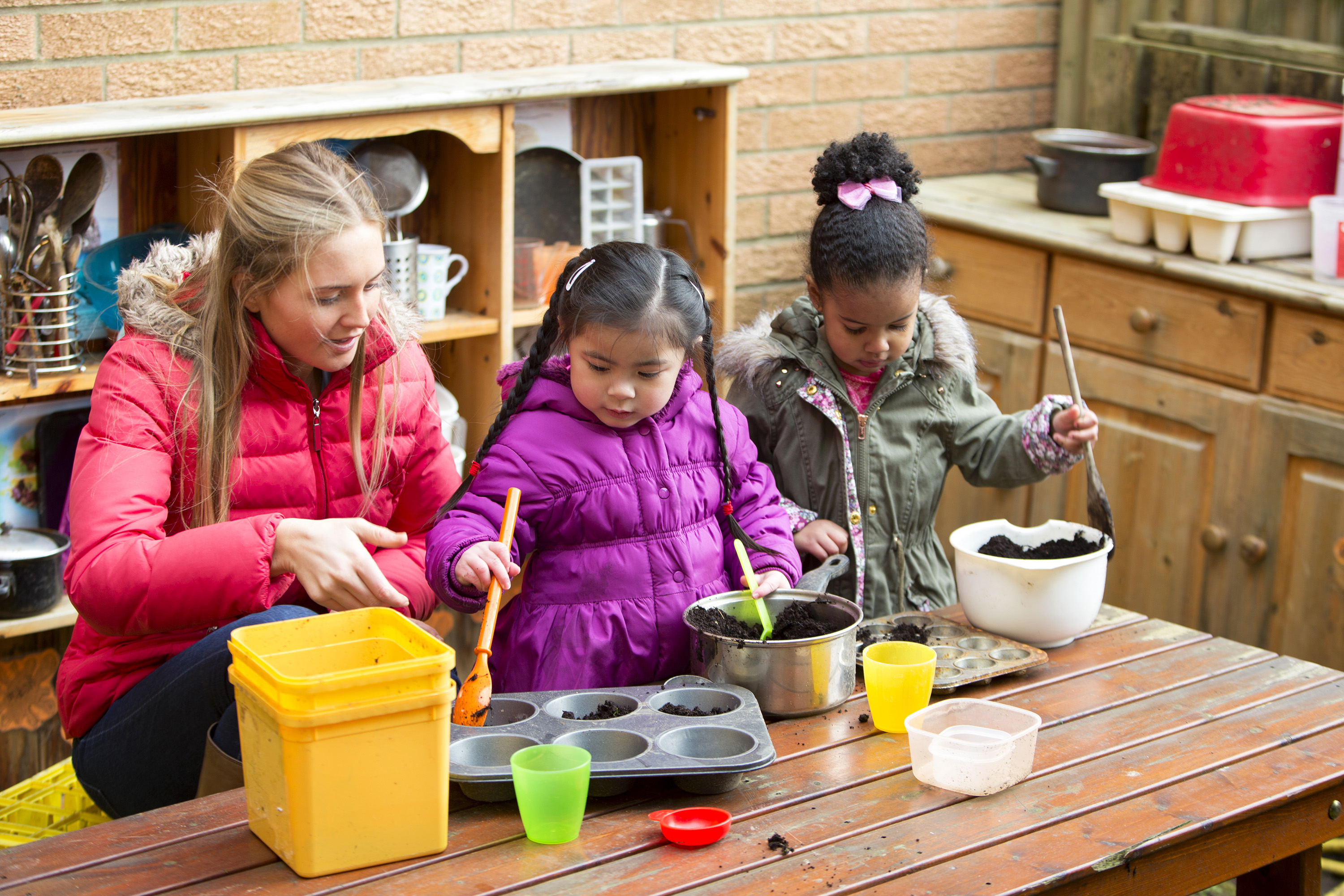
Get kids in the mood to bake – mud muffins that is. Grab an old muffin tray (you can often find them for very cheap second hand) and make a game of mixing up pretend cake batter with dirt, water, and maybe some torn up leaves for 'seasoning'.
Encourage kids to decorate their creations with petals and stones for a pretty topping, and they'll soon look good enough to eat (but make sure they don't).
10. Provide plenty of collecting tins
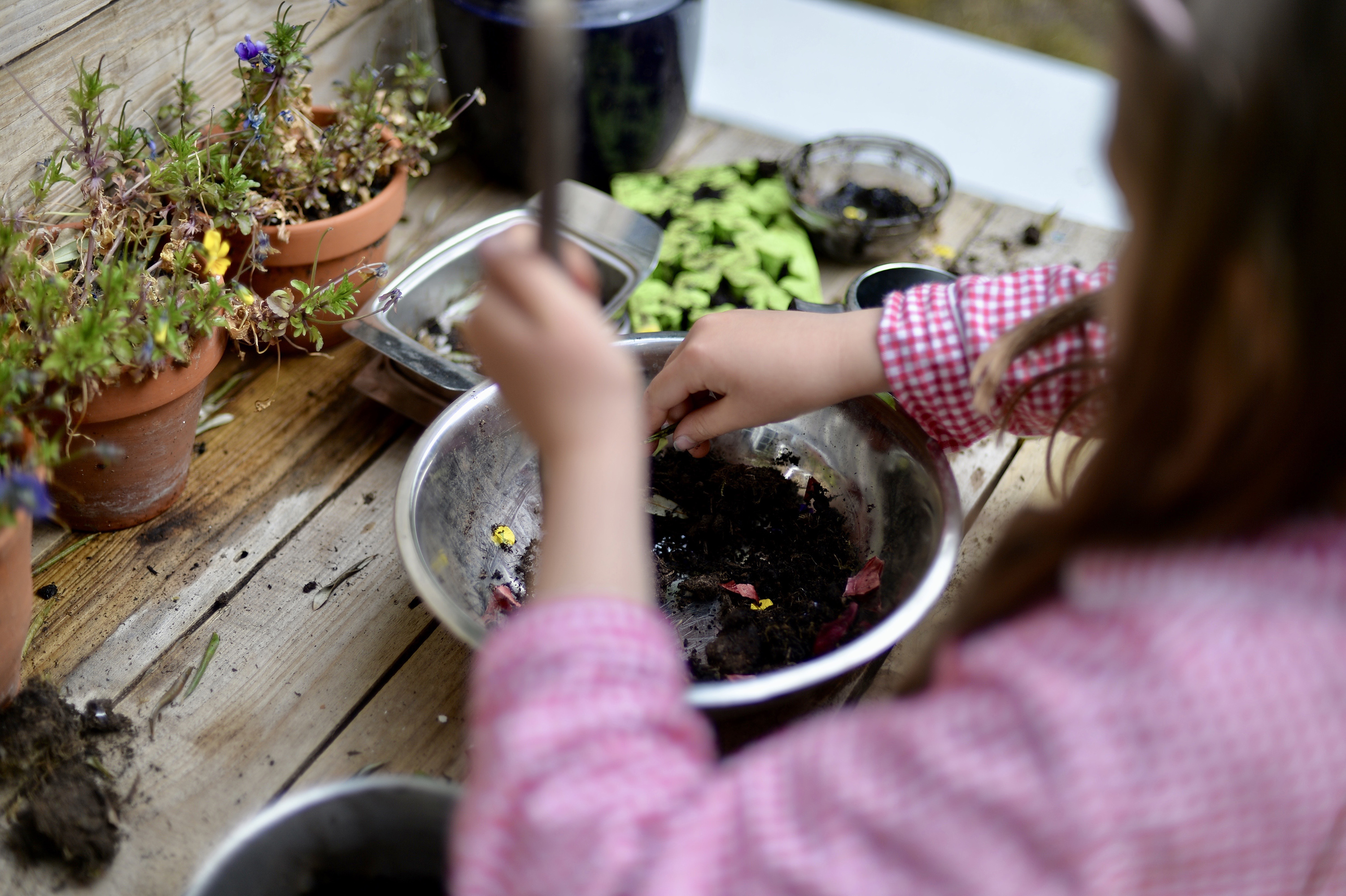
Essential for everything from collecting, mixing, and mushing to music making, robust tins provide endless opportunities and will last for ages.
Choose easy-clean and rust-proof containers in a range of different shapes and sizes. Hang them on hooks along the side of workbench, table or even low-hanging branch or stack the similar shapes to store.
And if you're after more solutions for where to put mud kitchen accessories once playtime is over, check out our garden storage ideas.
11. Concoct some magical potions
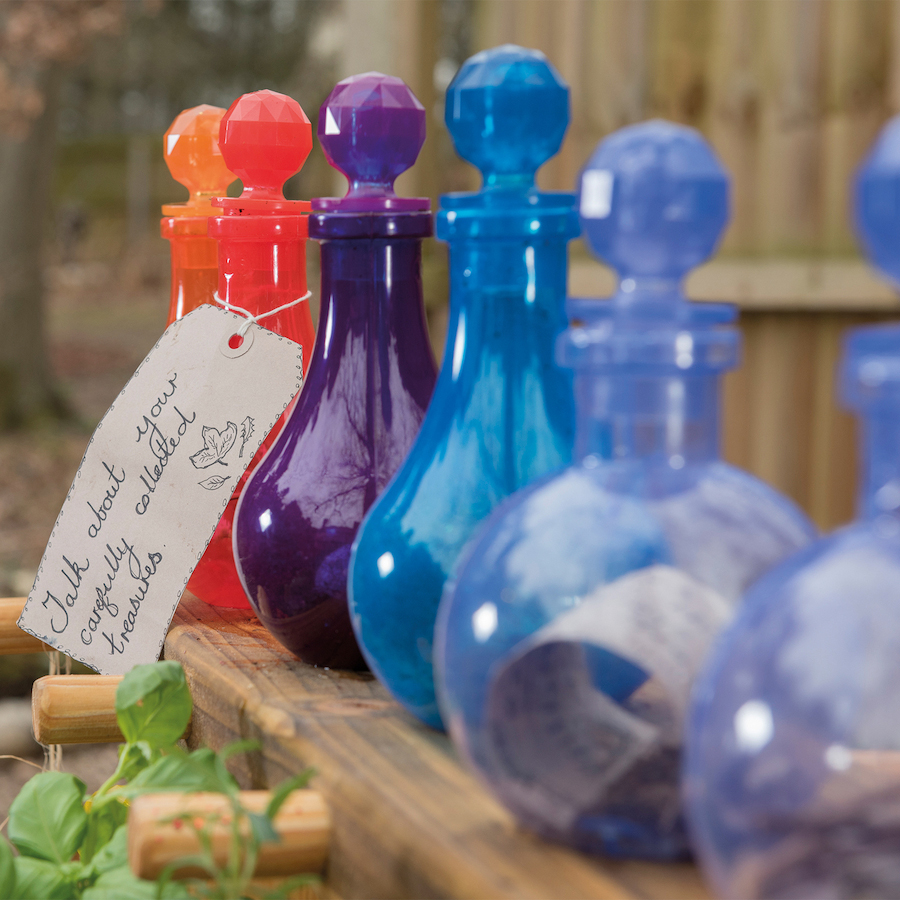
Did you ever make your mum some rose water perfume (aka petals and water) when you were little? Or maybe you were more a mud, grit and leaf chemist?
Whatever the preference, there's something irresistible about a row of labelled and colourful bottles, complete with mysterious concoctions inside. Okay, it could be as simple as a collection of clean-lidded jam jars, but we find that potion bottles like the ones shown above add an extra dose of magic.
12. Customise your own mud kitchen
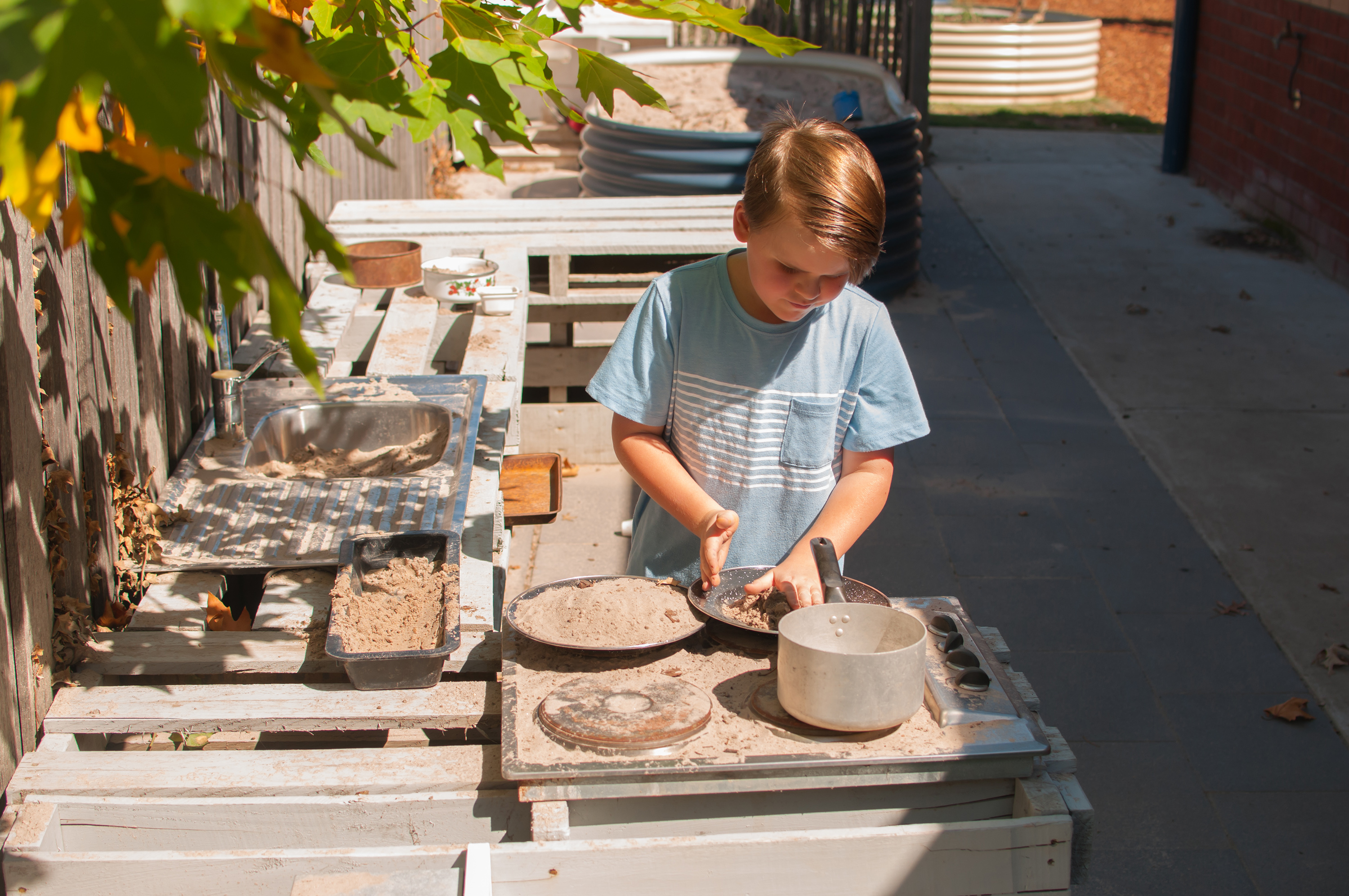
Upcycle an old kitchen bench, pallet, or table or have fun painting up a plain, ready-made outdoor hob. Make it a family project and get everyone involved adding ready-made log slice hob rings, cupboard doors with latch style fixings or simple wooden knobs.
Fix a section of trellis along the back to create an upstand and use metal ‘S’ hooks to hang utensils, plastic jugs and colanders.
You could then give it a bright and cheery look with a lick of our best exterior wood paints.
13. Add bubbles to the mix

Bubbles are bound to bring delight to, let's face it, pretty much anyone (pets included). But little ones will especially love watching them float into the sky, or jumping to try and pop as many as possible.
So why not add a dose of bubbly fun to their mud kitchen creations? It could be as simple as adding some washing up liquid to a bucket of water. But, you can also buy inexpensive tubes of bubble liquid with a wand included for them to blow.
14. Splash out on the right clothing

It's definitely true – 'there's no such thing as bad weather, just bad clothing' – and when it comes to enjoying messy time outdoors, children need to be well-equipped. This is especially true during the colder months.
Robust wellies are essential, and you can make them extra cosy with fleece liners. Keep them by the back door with a handy wellie rack, and if they do get wet inside, stuff them with dry newspaper and place somewhere warm. The paper will soak up the moisture – just keep replacing it until the job's done.
Waterproof trousers or an all-in-one for very little ones are perfect for keeping out wind and rain. Look for designs with a fleecy lining for extra warmth and those that are machine washable too. Just avoid bio-detergents and fabric conditioner as these can affect the waterproof qualities.
15. Get growing for spring
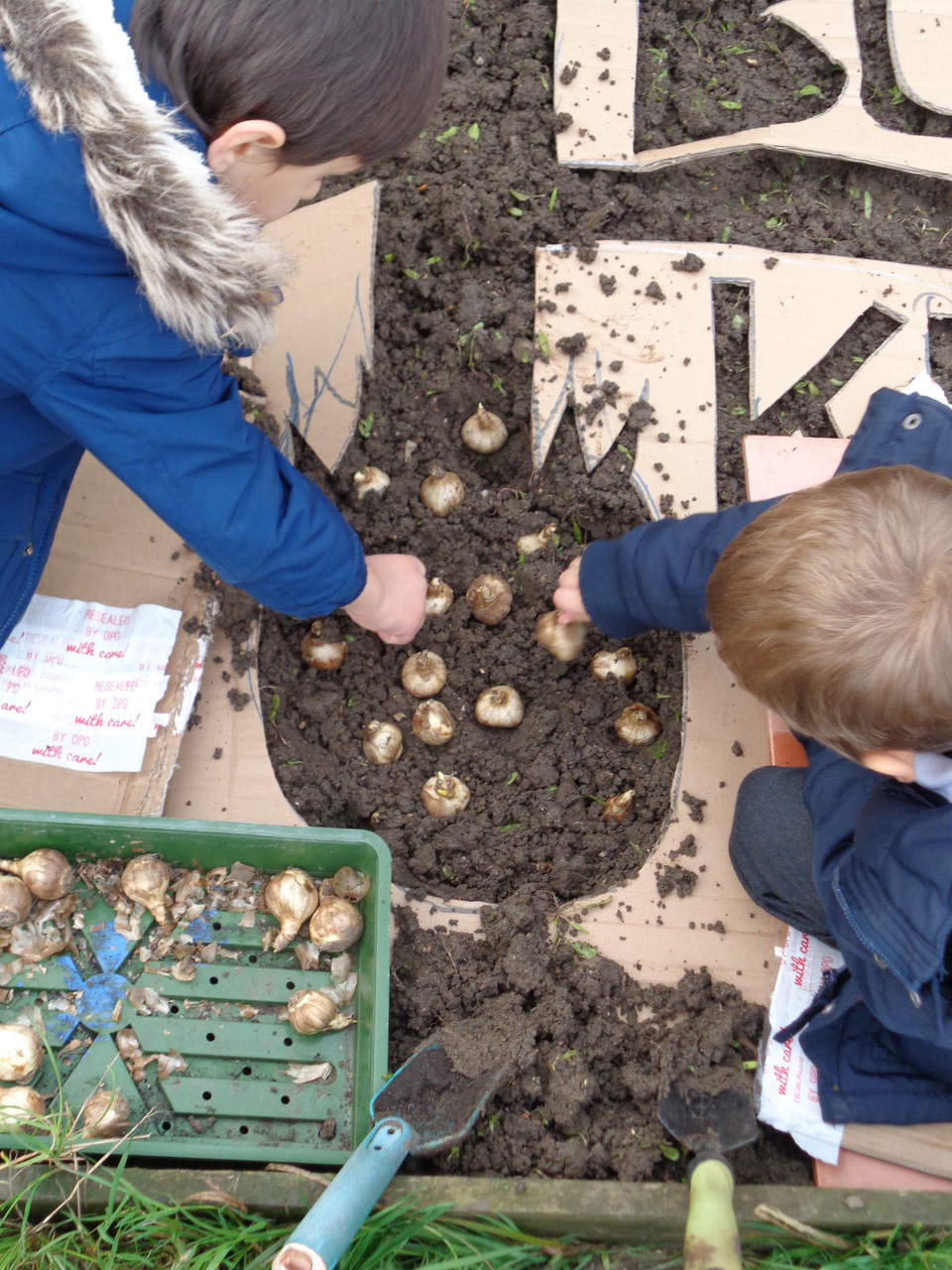
Keep little hands busy and involved by following our guide to planting bulbs. Depending on their age and the amount of adult supervision available, projects could include planting a painted terracotta pot with daffodil bulbs, learning how to plant a bulb lasagne, or even a growing a work of art.
Entice the children to get stuck in by letting them choose from the wide range of spring bulbs available. Encourage them to paint a container or construct a simple wooden raised bed – knocking out the base of a wooden fruit crate and sinking it into the ground works well. Or, you could even design a planting template together using a flattened cardboard box.
Then, it's simply a matter of watching and waiting for the magical moment when the first shoot appears. Just keep an eye out to make sure no bulbs get nibbled and that the best gardening gloves are worn when handling hyacinths.
16. Play with tactile treasures

Encourage children to put their lovingly collected goodies to use by creating tree folk faces. Mushing and moulding modelling clay or sticky mud into facial features is a fun way to fill your garden with friendly faces. It works just as well on tree stumps, rocks and brick walls too.
Once the face is in place, create hair, crowns and beards with leaves, petals and flowers. True, they won't last forever – unless you take a photo of course – but part of the charm is to see how they weather and change over time. You can also create new characters to suit the seasons.
17. Get down to eye level

It's easy to forget as adults, but the outside world takes on a whole new angle when viewed at a child’s height. Take yourself down to their level and seek out new pathways and spaces below shrubs and trees.
Groups of tree stumps and logs can become magical places to explore, each with a charm of their own. A sheltered spot under an evergreen shrub or umbrella-shaped tree can make a secret, protected spot ideal for wet weather play.
Add in a couple of log seats, a clutch of pea sticks or a pile of fresh autumn leaves and watch the magic take hold.
18. Encourage barefoot exploring

Remember the delight of shunning shoes and running around barefoot? Well it's more than just another chance to get messy, it actually helps to increase children's spatial awareness and strengthens the muscles in the feet and ankles, right up to their hips and lower back.
Of course we do need to make sure that the area is free from sharp stones, thorns and other potential hazards, but by creating a small hillock, adding smooth boulders and lush, grassy areas we can capitalise on this delightful sensation and provide tons of fun too.
We've got plenty more ideas in our guide on how to design a child-friendly garden.
19. Make treats for the birds
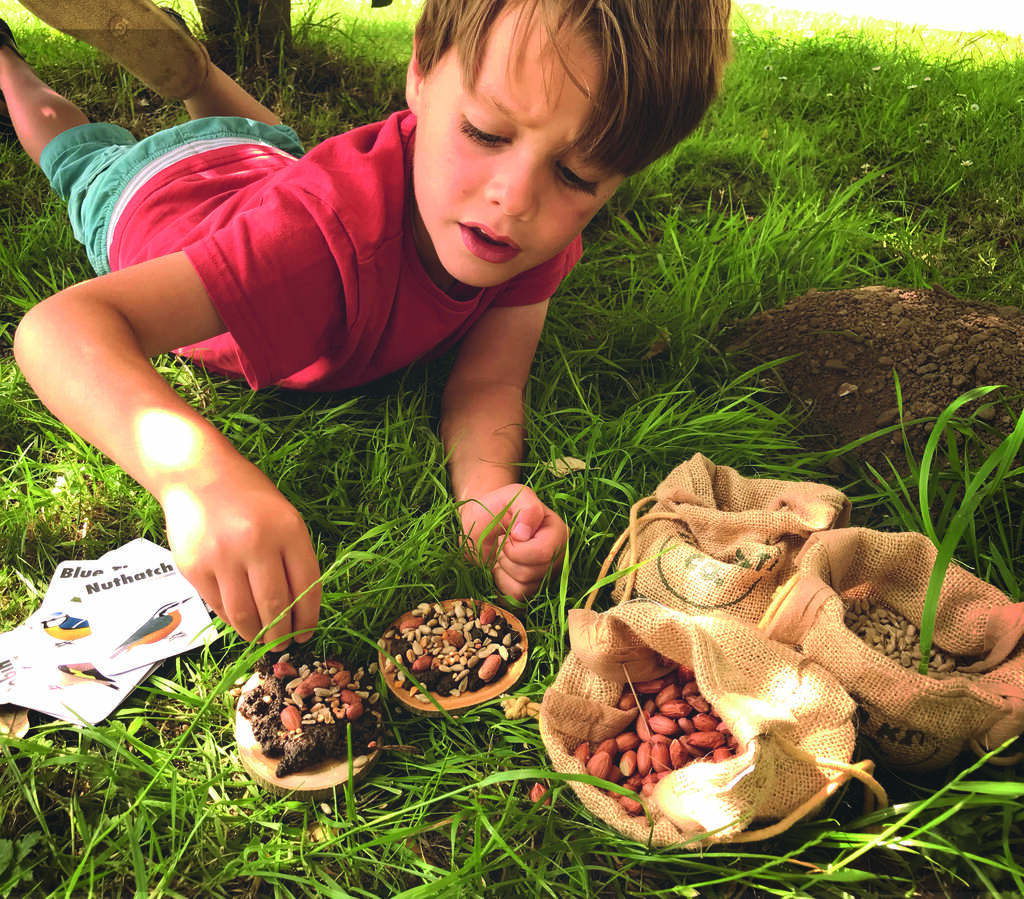
Concocting feasts for our feathered friends is a great way to encourage enthusiastic chefs, without the fear of culinary mishaps. Encourage children to think about how to attract birds into your garden, what different birds like to eat, and creative ways of feeding them.
To create fat balls, mix up grated vegetable fat or suet with sunflower seeds, pinhead oatmeal, crushed peanuts and nigella seeds and mould them into spheres with your hands. We've got more ideas in our guide to how to make bird feeders.
You could also try a handy kit that comes with all the ingredients you'll need.
20. Add a row of stepping stones
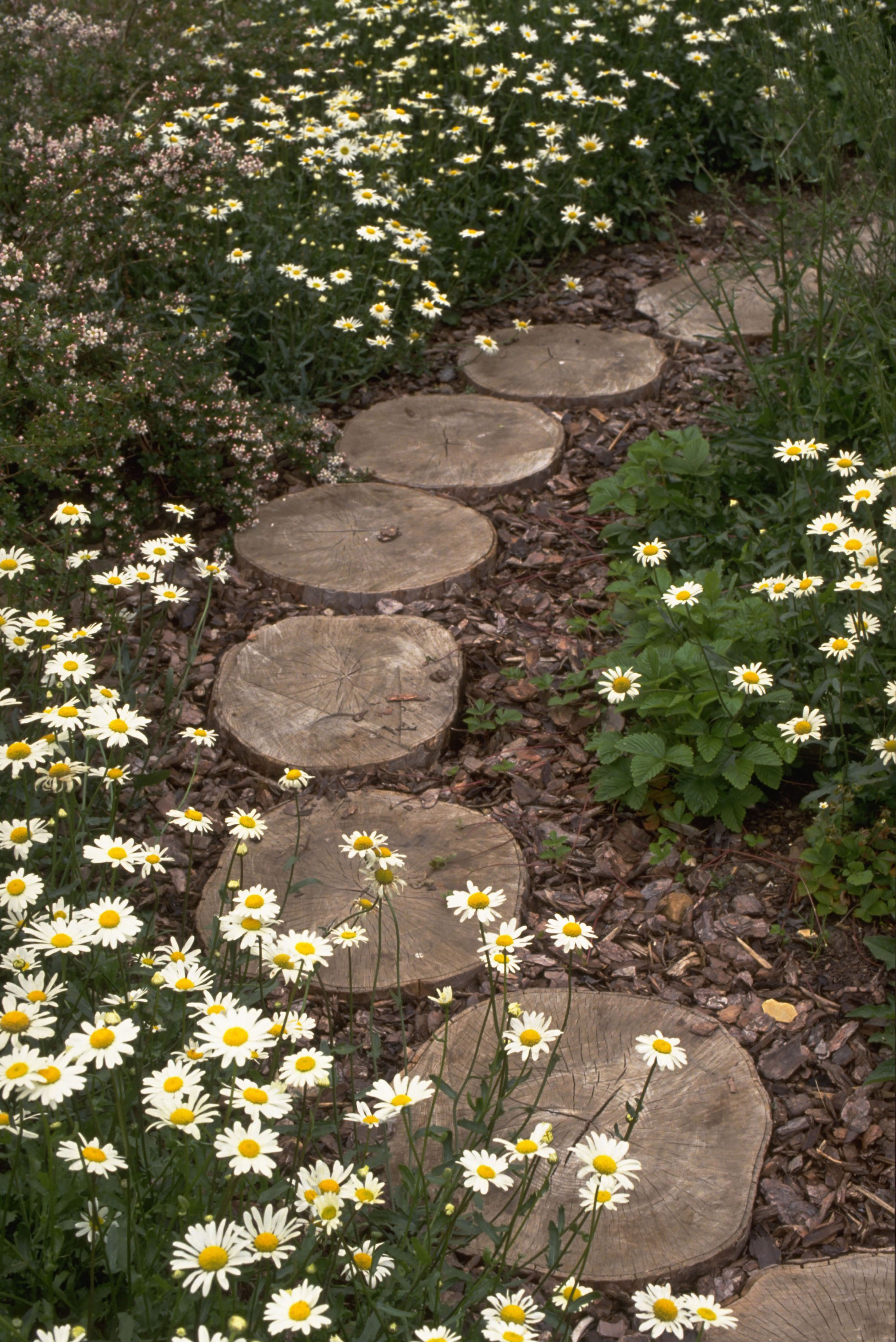
Whether you use a line of real log slices, imitation concrete slabs or smooth, giant paddlestones, garden path ideas where children can hop or jump from place to place is definitely a fun and simple pleasure.
Each slab or log can then double up as chalkboards (test a small area first to make sure it washes off properly), canvases for natural collages, mini battlefields and dinosaur hunting grounds. Cover them with gravel or mini bark chippings and enjoy clearing them away with toy diggers and bulldozers. Or, lay on a few textured leaves and grasses and make textured rubbings using paper and wax crayons.
How do you make a simple mud kitchen?

Sure, you can buy fancy, pre-made mud kitchens, but it's also incredibly simple (and inexpensive) to make your own. You just need the following things:
- A collection of sturdy pots and bowls for mixing – these can be second-hand.
- Fun utensils for stirring, dolloping, whisking, poking, and scraping. Wooden spoons, spatulas, chopsticks, and hand-held whisks are all good additions.
- A bucket of clean water, plus some good soil – you can buy loam topsoil from a garden centre if you don't want to dig up your garden.
- A handful of nature goodies – think cut grass, non-toxic flowers, pebbles, leaves, and sticks.
- Poster paints and bubbles (washing up liquid is fine) make interesting additions to mud kitchen creations.
- A bench or sturdy surface to put it all on.
What age are mud kitchens for?

The experts at Mud Kitchens explain that mud kitchens are perfect for children ages 1-7 years of age. However, their customer feedback shows that many older children (and even parents!) are often found busily making mud pies. After all, who can resist a good dose of old fashioned nature fun?
Remember we've got lots more ideas for everyone to enjoy in our family garden ideas feature.
Why are mud kitchens beneficial?
Mud kitchens aren't just fun, they're super beneficial for little ones too. The experts at Mud Kitchens reveal why:
- Elevates mood: Mud kitchen play increases the levels of serotonin in our brains, helping us to relax and feel soothed and calm, they say. Plus, fresh air and Vitamin D (obtained through being exposed to sunlight) are both great for boosting the spirits.
- Encourages creativity: 'Mud can be moulded and decorated and it responds differently than sand, clay or play dough.' Getting hands-on with tactile materials also stimulates imagination and encourages artistic play.
- Connects kids with nature: It's hard to care about things that you're not really involved with, and many kids these days spend more time glued to their screens than out-of-doors. But getting kids outside to play, act out make-believe worlds, and explore, creates happy memories with the one most primal element in our world: nature. Along with that comes a development of respect and understanding for the great outdoors.
- Helps kids learn and develop skills: 'Sensory, hands-on play feeds children's brains. Listing all the ways playing with mud – a delightfully sensory experience – can help children to learn and develop would be a whole post in itself.'

Jill puts her love of plants and all things garden related down to the hours spent pottering around with her Nan and Grandad when she was little. Today she is lucky enough to have a garden of her own in Surrey, England, and spends much of her time writing about them too.
